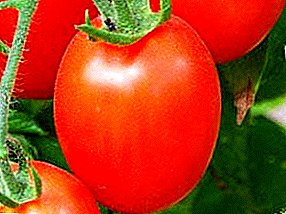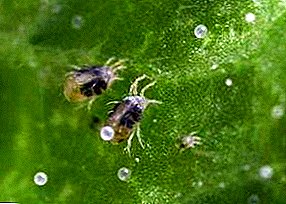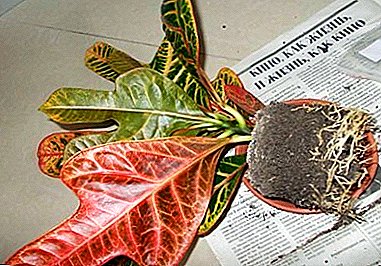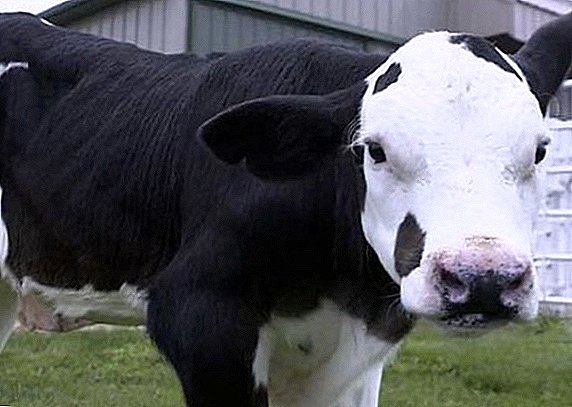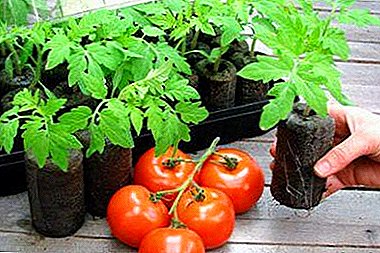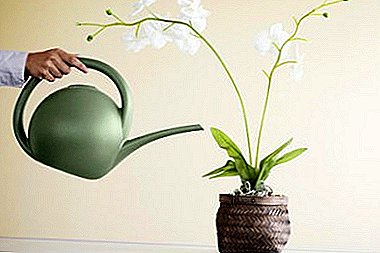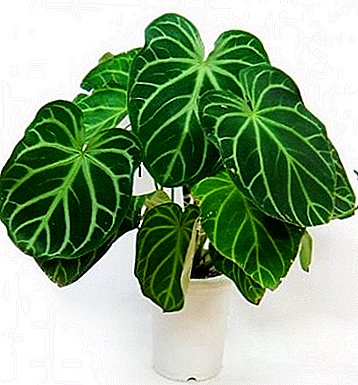 Barberry (lat. Berberis) is a perennial prickly shrub from the family of barberry, fruiting edible bright red berries. In the wild form is found mainly in the Northern Hemisphere. The plant reaches an average height of 2-2.5 m. It has spiky shoots and simple toothed leaves. Lives for several decades. Begins to bear fruit from the third to fourth years of life. Up to 13 kg of berries can be harvested from one shrub.
Barberry (lat. Berberis) is a perennial prickly shrub from the family of barberry, fruiting edible bright red berries. In the wild form is found mainly in the Northern Hemisphere. The plant reaches an average height of 2-2.5 m. It has spiky shoots and simple toothed leaves. Lives for several decades. Begins to bear fruit from the third to fourth years of life. Up to 13 kg of berries can be harvested from one shrub.
The plant has a number of useful properties. The berries are rich in vitamin C. The leaves contain malic acid, vitamins C, E. Oil is extracted from the seeds. Bark and roots are used as a yellow dye.
Did you know? Barberries are grown as an ornamental, medicinal, melliferous and dyeing culture. The berries of this plant are used for making sweets: jelly, caramel, jam, juice, and also as a seasoning.About 500 species of barberry shrub are known to exist, including evergreen and deciduous specimens. Of these, 45 species of barberry are introduced in many countries. This article contains useful information about the barberry and describes the most popular ornamental species and varieties.
Barberry Amur (Berberis amurensis)
The Amur barberry grows by 3.5 m. It has a wide spreading crown and large foliage - up to 5-8 cm in length, which has a different color depending on the time of year. In the spring it is bright green, in the fall it is yellow or red. The shoots of this species are spiny, yellow-gray. The plant blooms in May with inflorescences long up to 10 cm, containing 10-25 yellow flowers. Blossom begins at the age of one year. Fruits appear at the age of four. The barberry fructifies in the fall - berries oblong, red with shine, 1 cm in diameter.  The Amur barberry, like most varieties of a given culture, is unpretentious, its cultivation does not constitute a particular hassle. It can grow on any soil. It tolerates frosts, heat and drought. Resistant to such a disease as powdery mildew. Medium resistant to rust and fusarium.
The Amur barberry, like most varieties of a given culture, is unpretentious, its cultivation does not constitute a particular hassle. It can grow on any soil. It tolerates frosts, heat and drought. Resistant to such a disease as powdery mildew. Medium resistant to rust and fusarium.
It is preferred to be used for growing high hedges. He looks beautiful as a solitaire. Also coexists well with other plants in group plantings.
The most popular varieties of Amur barberry are Orpheus and Yaponika. Orpheus is a compact shrub of small size (up to 1 m in height), with light leaves. It does not bloom. Japan is beautiful due to the wide leaves and long yellow inflorescences, drooping in the form of a brush.
Canadian Barberry (Berberis canadensis)
A native of North America, the Canadian barberry is a tall sprawling shrub, reaching a height of 2.5 m and a diameter of 1.6-1.8 m. Its shoots are brown and dark red. The leaves are small, 2-5 cm long, oval. From May throughout the week, the barberry blooms with yellow buds. Fruits abundantly, with red berries 0.9 cm long. The fruits ripen in late September. In appearance, "Canadian" is similar to the barberry ordinary. 
Did you know? Barberries are also called sour, sour, and bluefish."Canadian" likes to grow in sunny areas, in the shade it becomes less decorative. Does not impose special requirements on the composition of the soil. It is frost-resistant, well tolerates dry periods.
In the homeland of this variety, Declinat varieties with purple sprouts and purple fruits are particularly popular; Oxyphyllus, Roderiana, with red branches.
Korean barberry (Berberis koreana)
This species has spread from the mountains of the Korean Peninsula. The bushes are quite high - they are over 2 m. The leaves are red. The flowers are fragrant, collected in brushes of 15-20 pieces. Fruits are small, spherical, 1 cm in diameter. The species is drought-resistant. Easily survives the heat.  The disadvantages of the Korean barberry can be counted as the fact that its tops freeze in the freezing winters, it is susceptible to rust and does not tolerate spring thaws.
The disadvantages of the Korean barberry can be counted as the fact that its tops freeze in the freezing winters, it is susceptible to rust and does not tolerate spring thaws.
Berberis montatine (Berberis nummularia)
Coin barberry originally from Asia. Heat lover. Refers to deciduous species. Young plants often frost over and are restored for a long time after frostbite. The crown of these shrubs grows well, reaches a maximum height of 2 m. On the shoots there are large spines up to 3 cm in length. The branches are painted red. It blooms bright yellow from late June to early July. Fruits in the second half of September, small fruits up to 1 cm in diameter, bright red.  In addition to the fact that this species cannot boast of frost resistance, it also does not tolerate excessive moisture - it vypravaet and soaks when water stagnates. Often affected by rust.
In addition to the fact that this species cannot boast of frost resistance, it also does not tolerate excessive moisture - it vypravaet and soaks when water stagnates. Often affected by rust.
Important! Barberries can not be planted nearby with cereals. It is the intermediate host for the linear rust fungus that attacks these plants.
Berberis vulgaris (Berberis vulgaris)
The shrubs of this variety of barberry grow to 2.5 m. The shoots are thorny, yellow-brown in color, diverging from the stem in different directions in the form of arcs. The leaves have a dark green color, their lower part - with a gray tint. In autumn they turn yellow. Flowering occurs in May - June. Racemes inflorescences, drooping, fragrant, yellow. The shrub fruits in autumn, beautiful oblong berries of an acidic color, 1.2 cm in size. The shrubs for a long time retain their decorative effect due to the fact that the fruits fall off only after a long time.
For barberry ordinary frost and drought resistance, good tolerance to air pollution. He loves the light, but can put up with a slight shade. The plant is almost not demanding on the composition of the soil. Nevertheless, it grows best on light non-acid soils. It tolerates pruning, is easily restored after this procedure, gives abundant gains.  Propagated in three ways: seed, bush division and grafting. The common barberry has one major drawback - in the cold and humid summer period it is often affected by fungal diseases: rust, powdery mildew, etc. In landscape design is involved in single and group plantings, for planting hedges.
Propagated in three ways: seed, bush division and grafting. The common barberry has one major drawback - in the cold and humid summer period it is often affected by fungal diseases: rust, powdery mildew, etc. In landscape design is involved in single and group plantings, for planting hedges.
Did you know? The barberry ordinary and Amur use for the medical purposes. Of them prepare tinctures that have choleretic properties and are able to stop uterine bleeding.The barberry ordinary has many popular forms in the decorative culture. For example, a shrub with red leaves called Atropurpurea. It blooms orange-yellow, the fruits are dark red.
Interesting and variegated form Albovariyegata. First of all, it draws attention with its decorative leaves that have a dark green color with white strokes and stains on the surface of the upper plate.
The form of Aureomarginat also has beautiful and remarkable leaves. They are dark green with gold splashes and borders. Among the others, there are varieties with white berries - Alba, with yellow - Lyutea.
Barberry of Ottawa (Berberis x ottawensis)
The Bar of Ottawa is a hybrid of the barberry of Thunberg and the form of the barberry of ordinary Atropurpurea. In height, the shrub of this species reaches 2 m. It has dark purple foliage, which reddens in autumn. It blooms in late May with raceme buds of yellow color.  When growing will require only mulching and organic supplements. The rest of this barberry unpretentious. Good winters without shelter. Resistant to most diseases. Growing fast.
When growing will require only mulching and organic supplements. The rest of this barberry unpretentious. Good winters without shelter. Resistant to most diseases. Growing fast.
Of the varieties used in decorative culture, the best known are Superba (with dark red leaves), Purpureya (with scarlet leaves), Auricom (with bright red leaves), Silver Myles (with dark leaves with silver pattern).
Siberian Barberry (Berberis sibirica)
Siberian barberry comes from Western and Eastern Siberia, Kazakhstan and the Middle East. Small shrub - up to a meter tall and in diameter. In flowering and fruiting comes in six years of age. Flowering continues for 12 days, in the period from the second half of May to the end of June. Fruits appear in August. This species is characterized by average winter hardiness. Because of the low decoration in the culture is almost never used.
This species is characterized by average winter hardiness. Because of the low decoration in the culture is almost never used.
Barberry Thunberg (Berberis thunbergii)
Barberry Thunberg was found in the mountains of China and Japan. This deciduous shrub is small in height - up to 1 m. In diameter - sprawling, up to 1.5 m. Young, strongly prickly branches are colored yellow, later becoming brown, red-brown. Also, the leaves change color depending on the season. They are small in barberry Thunberg (1-3 cm long), bright green in spring, red in autumn. Plant blooms in late May. Forms yellow-red inflorescences. Fruits in the fall. Fruits can not fall off throughout the winter. In food, they are not suitable because they munch.  The barberry of Thunberg has the same advantages as the majority of varieties of oxalis - it is drought-resistant, frost-resistant, undemanding to the soil, easily tolerates pruning. In addition, almost not affected by powdery mildew and rust.
The barberry of Thunberg has the same advantages as the majority of varieties of oxalis - it is drought-resistant, frost-resistant, undemanding to the soil, easily tolerates pruning. In addition, almost not affected by powdery mildew and rust.
Important! Since the shoots of most barberries have simple, trifoliate, five-pointed spines, it will be necessary to protect them with gloves during the trimming procedure.This species has about 50 interesting forms. Among them:
- Thunberg Aurea barberry - undersized shrub up to 0.8 m with yellow shoots, leaves and flowers;
- Bonanza Gold is a dwarf variety with a height of 30-50 cm with yellow-golden leaves;
- Atropurpurea - an original shrub up to 1.5 m high, with purple-red leaves, yellow flowers with red divorces;
- barberry Golden Rocket - interesting because of the unusual colony shape of the crown, yellow-golden leaves and a number of advantages: shade tolerance, winter, wind and drought resistance, resistance to urban conditions;
- Bagatel - reaches a height of 0.4 m. Remarkable flat-spherical shape of the crown, as well as brown leaves that change color to bright red by autumn. Refers to non-resistant varieties;
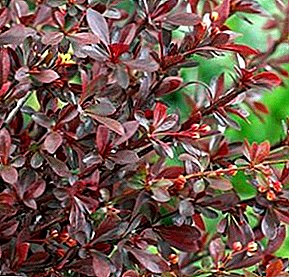 Red Chif is another heat-loving variety that endures winters badly. Shrubs of this variety grow to 2.5 m, widely spread crown. Their shoots are red. The fruits are pink and red;
Red Chif is another heat-loving variety that endures winters badly. Shrubs of this variety grow to 2.5 m, widely spread crown. Their shoots are red. The fruits are pink and red;- Atropurpurea Nana - dwarf barberry with a flat rounded crown, reaching a height of 0.4-0.6 m, in diameter - 1 m. It has dark red leaves. Beautiful during flowering two-color flowers that are red outside, in the middle - yellow. They are collected on 2-5 buds in racemes;
- Golden Ring - interesting because of the unusual color of the leaves: dark purple with light green edging. It reaches a height of 1.5 m. It does not tolerate frosts, needs winter shelter;
- Koronita barberry is a dwarf variety with a spherical crown, the leaves of which have a green color with a yellow border.
Barberry Turkmen (Berberis turcomanica)
Tall shrub native to the mountainside of Central Asia. It reaches a height of 3 m, but grows slowly. In flowering and fruiting enters the age of seven. Duration of flowering is about two weeks. Fruits appear in early October.  The species differs in winter and drought tolerance. In landscaping does not apply.
The species differs in winter and drought tolerance. In landscaping does not apply.
Barberry entire (Berberis integerrima)
In the wild, the whole barberry can be found at an altitude of 2500 m above sea level. Prefers to grow on stony sites. From here and its tendency to drought resistance, undemanding to soil and dislike for sour soils.  Shrubs of the barberry grow to a height of 2.5 m. The branches are painted in a beautiful brown-red color. The leaves are green with a gray tint. The flowers are yellow, clustered in buds of 20 buds each. Fruits are oblong, up to 1 cm in diameter. Their color is dark red, almost black, with a bluish bloom.
Shrubs of the barberry grow to a height of 2.5 m. The branches are painted in a beautiful brown-red color. The leaves are green with a gray tint. The flowers are yellow, clustered in buds of 20 buds each. Fruits are oblong, up to 1 cm in diameter. Their color is dark red, almost black, with a bluish bloom.
Mature plants tolerate frost well, young - only with shelter. Haircut for this type is not a problem.
Barberry sharoplodny (Berberis sphaerocarpa)
Barberry sharoplodny has another name - multi-blade. The region of its origin is Central Asia. Shrub grows well. It has a gray-green foliage. It is distinguished among other varieties by the color and shape of the fruit - its berries are spherical in dark blue with a bluish bloom. Also, the fruits have the highest content of vitamin C, therefore, are widely used in cooking at home. 
Did you know? In the Caucasus, dried barberries are called sumach and used as a seasoning for meat.The advantages of the barberry are:
- drought tolerance;
- resistance to heat;
- unpretentious care.
Barberry shrubs retain their decorative throughout the season. Deciduous species are especially beautiful in autumn, because during this period their leaves become the brightest color. Decorative varieties of barberries look beautiful in rocky gardens, landscape compositions, on the sides of ponds. Excellent combination with perennials in rabatki. Some types are great for hedges, borders. Used in single and group plantings.


 Red Chif is another heat-loving variety that endures winters badly. Shrubs of this variety grow to 2.5 m, widely spread crown. Their shoots are red. The fruits are pink and red;
Red Chif is another heat-loving variety that endures winters badly. Shrubs of this variety grow to 2.5 m, widely spread crown. Their shoots are red. The fruits are pink and red;
